Udusan Suspension Bridge (우두산 출렁다리 (거창 Y자형 출렁다리))
.0M 2024-10-10
830 Uisangbong-gil, Gajo-myeon, Geochang-gun, Gyeongsangnam-do
Udusan Suspension Bridge, situated on Udusan Mountain, named for its resemblance to a cow's head, is positioned halfway up the mountain. The bridge stands 60 meters above ground and spans a total length of 109 meters. Comprising three segments of 45 meters, 24 meters, and 40 meters, it is arranged in a Y-shape and is the only mountain pedestrian bridge in the country that connects three directions across a steep gorge. Crossing the bridge offers scenic views of rocks, waterfalls, and forests.
Geochang Anti-aging Healing Land (거창 항노화힐링랜드)
9.9M 2025-10-23
834 Uisangbong-gil, Gajo-myeon, Geochang-gun, Gyeongsangnam-do
Geochang Anti-aging Healing Land, located at the foot of Udusan Mountain (1,046 meters above sea level), is the ideal place for healing and therapy. Visitors can take a walk or join forest-themed experience programs. There is a Y-shaped suspension bridge without pillars, a first in Korea; and a barrier-free boardwalk designed for pedestrian safety and convenience. The forest trails, rich in phytoncide, are good for relieving stress and are the most popular here. There is a native plant garden near Gyeonam Waterfalls, where you can observe rare plants. Geochang Anti-aging Healing Land also has accommodation facilities, such as the Forest Recreation Center and the Forest House. The area is an ideal natural recreational destination, offering picturesque views of Bigyesan Mountain and the beautiful Uisangbong Peak, often referred to as "little Geumgangsan Mountain" due to its unique rock formations.
Dals Garden / 달의 정원
7.2Km 2025-03-18
13-31 , Chiin 1-gil, Hapcheon-gun, Gyeongsangnam-do
+82-55-934-0107
Located on the way to Haeinsa Temple in Hapcheon-gun, Gyeongsangnam-do, Garden of the Moon is a hanok stay combining 50 years of history with convenient modern facilities. There are 10 guest rooms, including a free-standing one that’s a little wider than a regular ondol room and has a bed. The view of Mount Gaya as it rises behind the house is spectacular. Access is easy, as Haeinsa Intercity Bus Stop is just 3 minutes away; and after waking from a good night’s sleep, guests can visit Haeinsa Temple or climb Maehwasan Mountain.
Busan Sikdang (부산식당)
7.4Km 2024-02-27
8 Chiin 1-gil, Gaya-myeon, Hapcheon-gun, Gyeongsangnam-do
Busan Sikdang is a restaurant specializing in sanchae bibimbap (wild vegetable bibimbap), located in front of Haeinsa Temple, which houses the Tripitaka Koreana. They offer local dishes such as sanchae hanjeongsik (wild vegetables Korean table d'hote) and pyogobeoseot jeongsik (shiitake mushrooms set menu) made with wild vegetables, deodeok, mushrooms, and other ingredients harvested from Gayasan Mountain. Side dishes include seasoned wild vegetables, grilled deodeok, green onion pancakes, and acorn jelly salad.
Gayasan Sori-gil (가야산 소리길)
7.5Km 2025-03-17
1783 Gayasan-ro, Gaya-myeon, Hapcheon-gun, Gyeongsangnam-do
Gayasan Sori-gil is a 6-kilometer walk from Hapcheon Theme Park of the Tripitaka Koreana to Yeongsangyo Bridge, near Haeinsa Temple (one of the three major temples in Korea), which restores the old Hongnyu-dong path. This route allows you to stroll along the valley, where you can listen to the sounds of water, birdsong, and immerse yourself in the natural beauty of Korea. Along the way, you can visit some of Gayasan's stunning locations, including Nongsanjeong Pavilion, Gilsangam Hermitage, Nakhwadam Reservoir, and a red clay trail.
Hapcheon Haeinsa Temple (해인사 (합천))
8.9Km 2022-12-26
122, Haeinsa-gil, Hapcheon-gun, Gyeongsangnam-do
+82-55-934-3000
Haeinsa Temple is one of Korea's three largest temples, and was founded during the third year of King Ae-jang's reign (802) by two monks Suneung and Ijung. The name "Haein" originates from the expression "Haeinsammae of Hwaeomgyeong" (Buddhist scripture), which means truly enlightened world of Buddha and our naturally undefiled mind. Along with the Printing Woodblocks of the Tripitaka Koreana (National Treasure) and Janggyeongpanjeon Depositories (National Treasure), various treasures are enshrined at Haeinsa Temple.
Tripitaka Koreana Cultural Festival (대장경기록문화축제)
9.2Km 2025-11-06
1160 Gayasan-ro, Gaya-myeon, Hapcheon-gun, Gyeongsangnam-do
+82-55-930-4697
The Tripitaka Koreana Cultural Festival showcases the cultural values of Tripitaka Koreana combined with vibrant content featuring splendid autumn flowers. Visitors can enjoy fall flowers and take part in various hands-on activities.
Odosan Healing Forest (오도산 치유의 숲)
9.4Km 2025-10-23
398, Odosanhyuyang-ro, Bongsan-myeon, Hapcheon-gun, Gyeongsangnam-do
+82-55-930-3742
Odosan Healing Forest is nestled at the foot of the tall Odosan Mountain (1,133 meters above sea level) in Hapcheon. The mountain spans the areas covering Gajo-myeon in Geochang-gun, Gyeongsangnam-do and Myosan-myeon and Bongsan-myeon in Hapcheon-gun, Gyeongsangnam-do. Odosan is at the end of the Gayasan Mountain Range along with Dumusan Mountain (1,039 meters above sea level), which is situated 2 kilometers to the northeast. North of Odosan Healing Forest, you will find Haeinsa Temple, home to the Tripitaka Koreana and one of the three major temples in Korea, as well as Gayasan Mountain, and Maehwasan Mountain. Hapcheonho Lake is south of the forest, so there are several tourist destinations in the area and the natural landscape is superb. The azaleas and royal azaleas are in full bloom in spring; cool valley waters can be enjoyed in summer; and the mountain's colorful fall foliage is as beautiful as that of Naejangsan Mountain, a renowned spot to enjoy autumn colors. You can enjoy mountain climbing along the valley surrounded by thick forests. It is said that Doseon, a well-known monk from the late Silla Dynasty, was fascinated by the energy and beauty of Odosan Mountain and practiced asceticism there.
Enjoying the Odosan Recreational Forest
Convenient facilities unfold along the valley within the Odosan Recreational Forest, such as the visitor information center, forest cabins, a communal kitchen, camp decks, campsites, etc. Notably, the hiking trail behind the forest cabins follows the clear stream that flows year-round, leading to Sukseongsan Peak, a small peak on the slope of Odosan Mountain. The trail overlooks Hapcheonho Lake and offers hikers a beautiful view. Odosan Recreational Forest consists of dense natural forests filled with pine and oak trees that are 20 to 50 years old. Also, a variety of vegetation, including the wild cherry, crimson glory vine (called meoru in Korea), and kiwiberry vine (called darae in Korea), as well as herbaceous plants can be found here. This makes it an ideal site for students, including teenagers, to learn about nature.
Gayasan National Park (Baegundong Area) (가야산국립공원-백운동 지구)
11.4Km 2021-04-28
Baegun-ri, Seongju-gun, Gyeongsangbuk-do
+82-55-930-8000
Gayasan Mountain in Gyeongsangbuk-do was designated as a national park in 1972. The mountain's main peak, Chilbulbong Peak, towers at 1,433 meters. It borders Seongju-gun, Hapcheon-gun and Geochang-gun. In particular, the mountain range stretching along Suryun-myeon, Seongju-gun is famous for its scenic nature. Furthermore, the beautiful Gayasan Beltway, which extends from Suryun-myeon to Gayasan Mountain, highlights the splendor and grandeur of the precipitous crimson cliffs.
Gayasan Wildflower Botanical Garden (가야산 야생화식물원)
11.6Km 2021-12-22
49, Gayasansingmurwon-gil, Seongju-gun, Gyeongsangbuk-do
+82-54-931-1264
Gayasan Wildflower Botanical Garden opened on June 16, 2006 as the nation's first botanical garden dedicated to wildflowers. The garden is home to over 400 plant species, ranging from wildflowers to trees, and serves as a cultural space with educational research and preservation training. In addition to the general exhibition hall, there is a greenhouse on the basement level. There are 92 tree types including pine, 54 bush types including royal azalea, and 257 wildflower types including windflowers. The garden is beautiful all year round, showcasing the changing of the seasons.

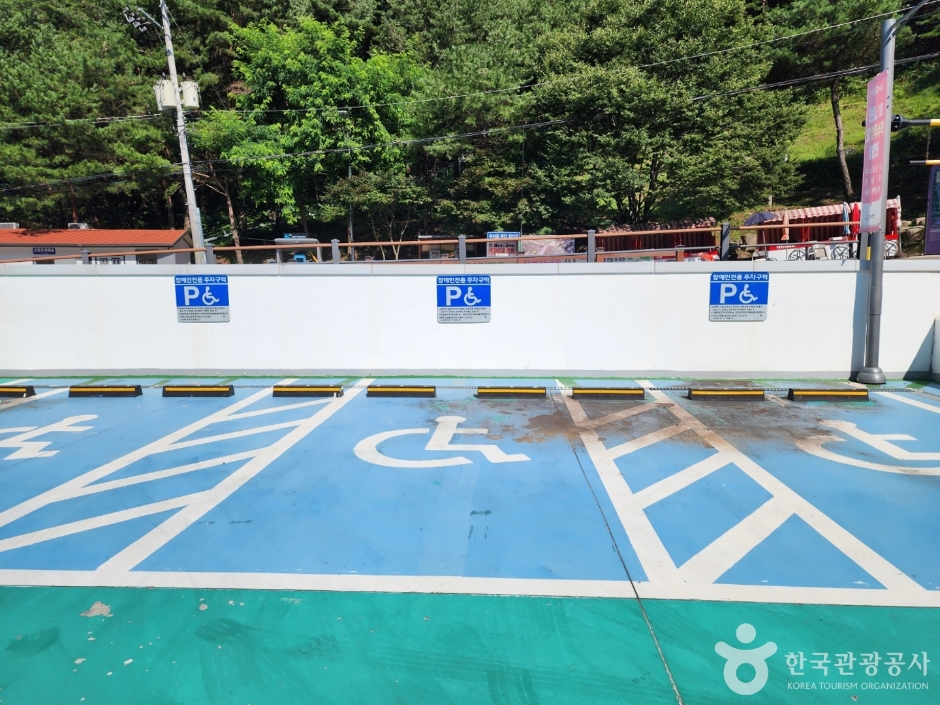
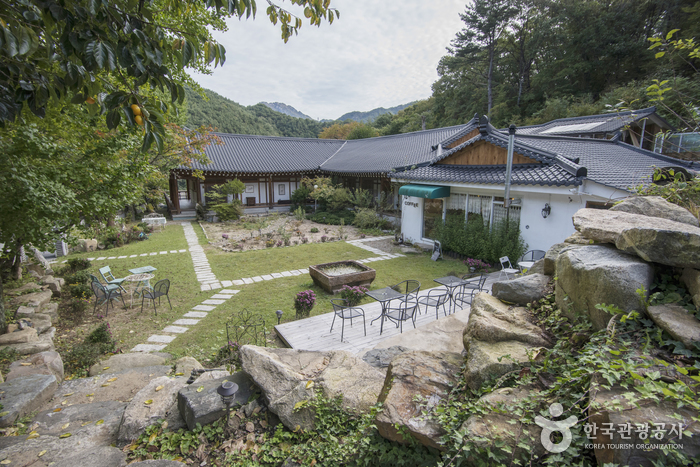
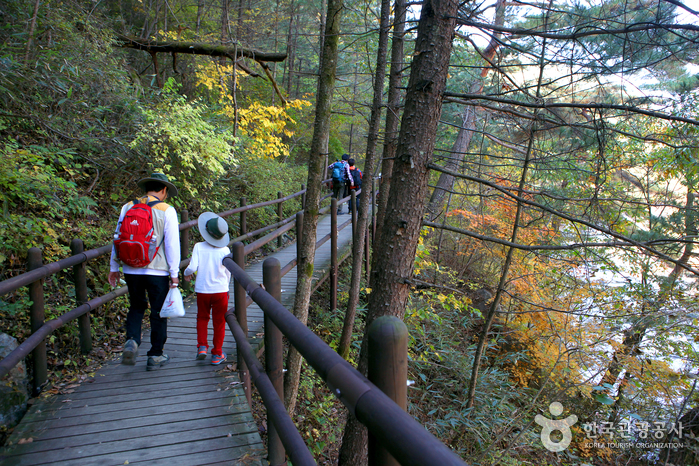
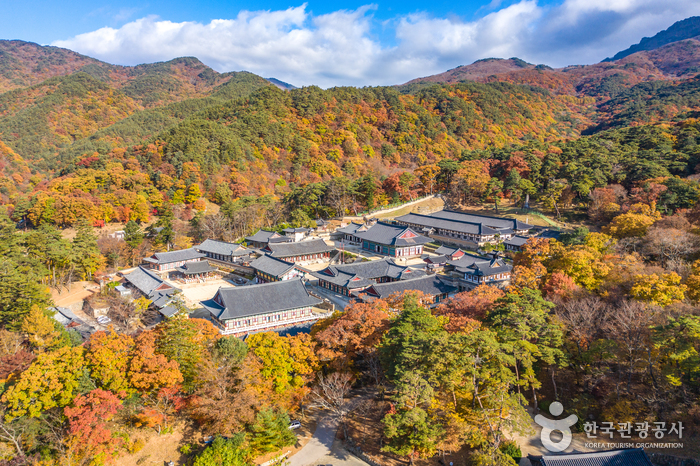
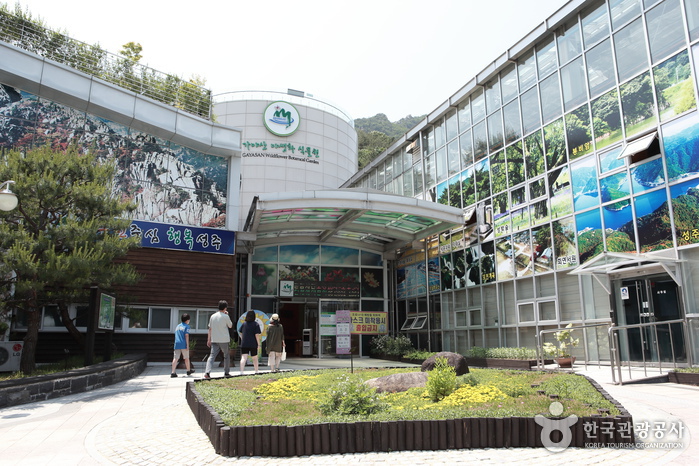
 English
English
 한국어
한국어 日本語
日本語 中文(简体)
中文(简体) Deutsch
Deutsch Français
Français Español
Español Русский
Русский